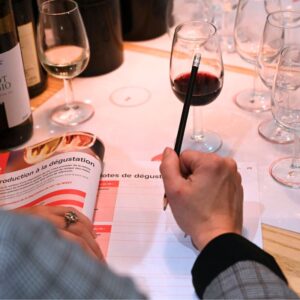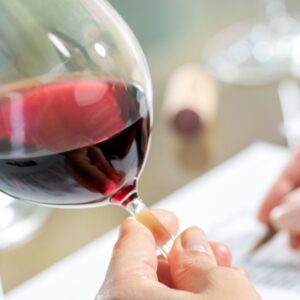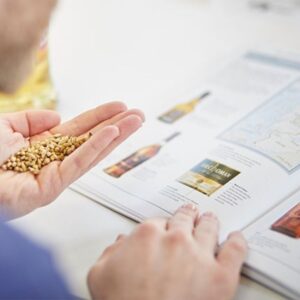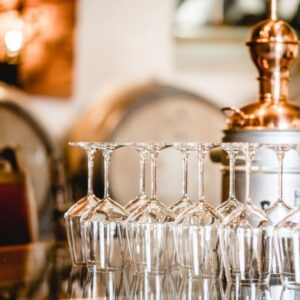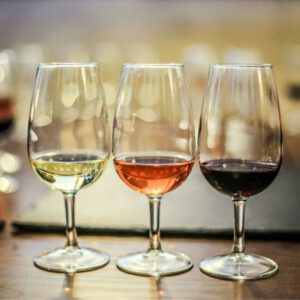Tasting is not just “sipping”
Tasting is at the heart of the wine, spirits, sake, and beer world.
Many believe that having a “good palate” is enough to evaluate a wine.
But in reality, tasting is a technical skill — one that requires method, precision, and curiosity.
Whether you’re an enthusiastic amateur or an aspiring professional, it’s easy to fall into some of the most common tasting mistakes:
- Judging too quickly
- Confusing emotion with analysis
- Or simply going with your instinct… without any structure.
These tasting mistakes — even if they seem harmless — can slow your progress, make you miss out on exceptional wines, or undermine your credibility in a professional setting.
The good news?
These tasting mistakes are common, totally natural… and most importantly, fixable.
At Weeno, a certified WSET training center, we help hundreds of students each year to structure their tasting practicewith a reliable, analytical — and enjoyable — method.
In this article, we’ll share the 7 most frequent tasting mistakes and practical tips to help you avoid them — based on the gold-standard tasting techniques taught in WSET wine and spirits qualifications.
Whether you’re preparing for a WSET exam or simply want to elevate your tasting skills, this guide is for you.
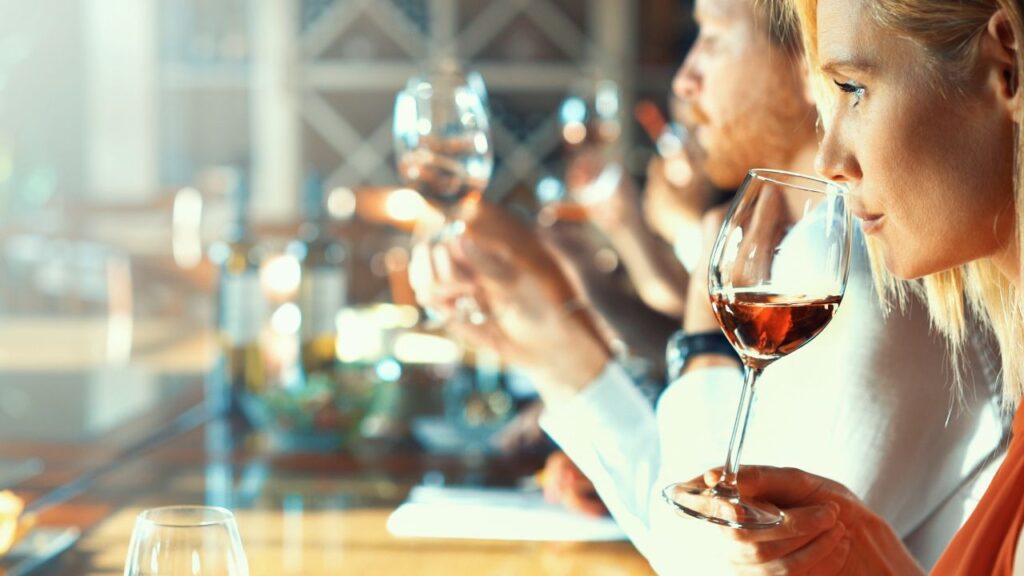
Mistake #1: Tasting Without a Method (or Improvising Every Time)
“I just go with my gut…”
That’s one of the most common — and most limiting — tasting mistakes.
Many beginners rely on instinct and immediate impressions.
But without a clear and consistent structure, it quickly becomes difficult to compare wines, build memory, or improve.
Tasting is not just a personal feeling.
If you want to compare wines objectively, you need a reliable and repeatable framework.
And that’s exactly where most amateurs — and even some professionals — go wrong:
- They describe wines with vague words like “it’s good”, “it has personality”, or “not really my thing.”
- They skip essential elements like acidity, tannins, finish, or balance.
- They mix everything together — what they smell, what they taste, and how they feel emotionally.
The result?
Every tasting becomes a disconnected experience.
You can’t build benchmarks, recognize wine styles, or defend your tasting notes professionally.
How to fix this?
Use a structured tasting method.
The WSET SAT (Systematic Approach to Tasting) is one of the most widely used tools among wine professionals worldwide — sommeliers, retailers, importers, and educators.
It teaches you how to describe, analyze, and evaluate a wine, spirit, sake, or beer with clarity and precision.
The SAT is built on 4 key pillars:
- Appearance – clarity, intensity, color
- Nose – cleanliness, intensity, aroma profile
- Palate – sweetness, acidity, tannins, flavor profile, length
- Conclusion – overall quality and aging potential
With this method:
- You know what to observe, in what order
- You build a precise sensory vocabulary
- You can compare wines — even months later
- Your tastings become consistent, analytical, and professional
This is exactly what we teach at Weeno in our WSET courses — starting from Level 1 and going deeper in Levels 2 and 3 to help you avoid these common tasting mistakes.
👉 Want to improve your tasting skills or prep for your next WSET exam?
Check out our full guide on how to master the tasting exam

Mistake #2: Letting the Label or Price Influence You
“It’s a Grand Cru, so it must be amazing.”
“It costs €80 — it has to be incredible.”
“It’s organic, so it must be good.”
“I don’t like Spanish wines.”
If you’ve ever thought something like this, you’ve fallen into the trap of cognitive bias.
A famous name, an elegant label, a high price tag — and suddenly, your expectations are set.
But staying objective is essential if you want to improve your tasting skills, especially if you’re working in the industry or preparing for a WSET exam.
One of the most common and subtle tasting mistakes is judging a wine before even tasting it — based on:
- Its geographic origin
- Its price
- Its reputation or packaging
- A past experience (positive or negative)
- Or even… the person who served it
What’s the result?
Your brain tries to confirm what it already believes, instead of focusing on what your senses are actually telling you.
Why is this a real obstacle to your progress?
Because this kind of bias:
- Skews your perception
- Limits your curiosity
- Prevents you from developing an independent, critical palate
You risk:
- Overlooking fantastic wines just because they’re lesser-known
- Overrating prestigious labels based on price and not quality
- Dismissing entire regions, grape varieties, or wine styles that could surprise and impress you
It is the most common of the tasting mistakes, even among advanced tasters and professionals.
How can you avoid this mistake?
Practice blind tasting as often as possible.
It’s the most effective way to evaluate a wine for what it truly is — not what you think it should be.
Here are some practical tips:
- Taste in a group and hide the bottles
- Ask someone else to pour the glasses
- Avoid reading the label or back label until after your tasting note is finished
In WSET Level 2 and Level 3 courses, blind tasting is an essential part of the learning process.
You learn how to:
- Identify aromas and wine structure objectively
- Assess a wine based on its intrinsic quality — not its price, region, or branding
And this analytical approach makes all the difference — whether you’re a wine merchant, sommelier, restaurateur, or curious enthusiast.

Mistake #3: Judging Wines Based Only on Personal Preferences
“I don’t like white wines, so this one must be bad.”
“I love this wine — it definitely deserves a medal.”
“I can’t stand dry Riesling, so it must be poor quality.”
This is one of the most common tasting mistakes: confusing personal taste with wine quality.
And while it’s a very human instinct, it undermines any professional or educational tasting.
Being able to separate your preferences from objective evaluation is essential in any serious tasting.
Why is this a problem?
Because your personal taste isn’t a universal standard.
A wine can:
- Be technically excellent — balanced, varietally correct, and well-crafted — but not appeal to your taste
- Feel immediately enjoyable — yet lack structure, typicity, or technical precision
A good taster doesn’t judge based solely on whether they like a wine.
They can recognize the quality of a wine they personally dislike, and spot flaws in wines they love.
How can you avoid this mistake?
Train yourself to separate personal preference from professional evaluation.
During your tastings, ask yourself two questions:
- Do I like this wine? (subjective)
- Is this wine well-made? (objective)
Learn the criteria of wine quality to avoid bias during evaluation.
In WSET training, this distinction is fundamental:
You learn how to assess a wine’s intrinsic quality using clear criteria:
- Balance
- Intensity
- Finish (length)
- Complexity
The SAT method (Systematic Approach to Tasting) helps you structure your analysis, even when the wine is not your favorite style.
This enables you to:
- Recommend wines to clients without projecting your own preferences
- Score wines fairly in competitions
- Gain credibility in professional settings
Real-world example:
A dry Riesling from Germany — sharp, lean, and aromatic — may not be to everyone’s taste.
But if it is balanced, precise, and shows excellent varietal expression, it is a great wine — whether you personally enjoy it or not.

Mistake #4: Rushing Instead of Observing
“Let’s go — straight to tasting.”
“I smelled it quickly, didn’t pick up any aromas.”
“It’s dark red, must be a big Syrah.”
Many beginners (and even experienced tasters) skip steps and rush through the process:
They want to identify the grape or give their opinion after the first sip…
And they miss the most important part of tasting: slow, patient, analytical observation.
Why is this a problem?
Because professional tasting isn’t a race — it’s an investigation.
Each step gives you clues: the color, clarity, legs, aromas, structure…
But to detect them, you need to slow down, observe, and let the wine reveal itself.
When you rush:
- You miss key visual and aromatic information.
- You bias your mouthfeel perception by deciding too early what the wine “should” be.
- You reduce your accuracy, memory, and ability to improve over time.
How can you avoid this mistake?
Use a structured and progressive approach — like the SAT method taught in WSET courses:
- Look at the wine: clarity, color, and legs give clues about age, style, and concentration.
- Smell from a distance, then closer — to pick up both subtle and intense aromas.
- Taste slowly, analyzing the balance: sugar, acidity, tannins, alcohol, intensity, and length.
- Conclude with a quality assessment — based on facts, not assumptions.
WSET Tip:
Close your eyes for a few seconds when smelling a wine — it heightens your ability to detect volatile aromas.
And don’t rush to identify the grape: first focus on describing what’s actually there.
Pro Tip:
Take notes at every step. This helps you slow down, organize your perceptions, and accelerate your learning.
Want to learn how to avoid these tasting mistakes and analyze wine like a pro?
Explore our WSET wine courses — available in-person or online, with access to tasting kits, interactive quizzes, and expert instruction.
👉 Join our next session
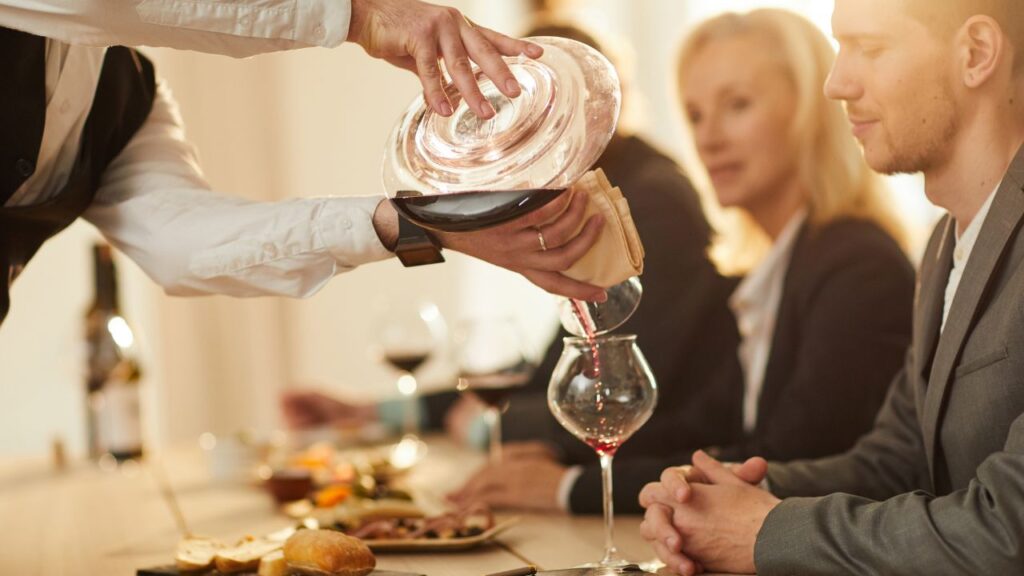
Mistake #5: Tasting in the Wrong Conditions
“It felt closed… weird.”
“I tasted it last week and it was way better!”
“Must be a bad wine — I couldn’t smell a thing.”
But what if the problem was not the wine… but the context?
Many wine lovers overlook three critical factors in tasting:
- The glass
- The serving temperature
- The order in which wines are tasted
And yet, each of these can completely distort your sensory perception.
Why is this a problem?
In tasting, every detail matters.
- A poor-quality glass can mute aromas.
- A white wine served too cold or a red too warm can throw off the flavor balance.
- Tasting a delicate wine after a bold, tannic one can make it seem bland or flawed.
The result?
You think the wine is “just okay”…
But it’s actually poorly served.
You miss its true quality.
You misjudge the wine — and hinder your own progress.
How to avoid this mistake?
Pay attention to your tasting environment.
These are the basic standards we teach in our WSET wine courses:
Use the right glass, always
Choose an ISO or INAO wine glass: tulip-shaped, narrow at the base, and slightly tapered at the top.
Avoid thick, flared, or small glasses — they trap aromas or disrupt the tasting balance.
Serve at the right temperature
| Wine Type | Ideal Temperature |
| Dry white / Rosé wines | 8–10°C |
| Aromatic / Sweet / Sparkling | 6–8°C |
| Light-bodied red wines | 12–14°C |
| Full-bodied / Aged red wines | 16–18°C |
WSET Tip:
A wine that’s too cold seems closed and acidic.
A wine that’s too warm can exaggerate alcohol and dull freshness.
Follow the correct tasting order
Taste from light to bold, dry to sweet, and young to aged.
A bold or oaky wine can overwhelm your palate and skew the next tasting.
Take breaks, rinse your glass, and neutralize your palate with plain bread if needed.
Pro Tip:
Before any serious tasting, stabilize your environment:
- Use consistent glassware
- Control the temperature
- Avoid perfumes and strong odors nearby
- Open the bottle 15–30 minutes in advance (depending on the wine)
- Use natural lighting when possible
These are the foundations of reliable sensory analysis.
Want to taste like a pro and avoid the most common tasting mistakes?
Train with us at Weeno, an official WSET Approved Program Provider.
👉 Explore our upcoming courses in-person or online: weenodrinksacademy.com
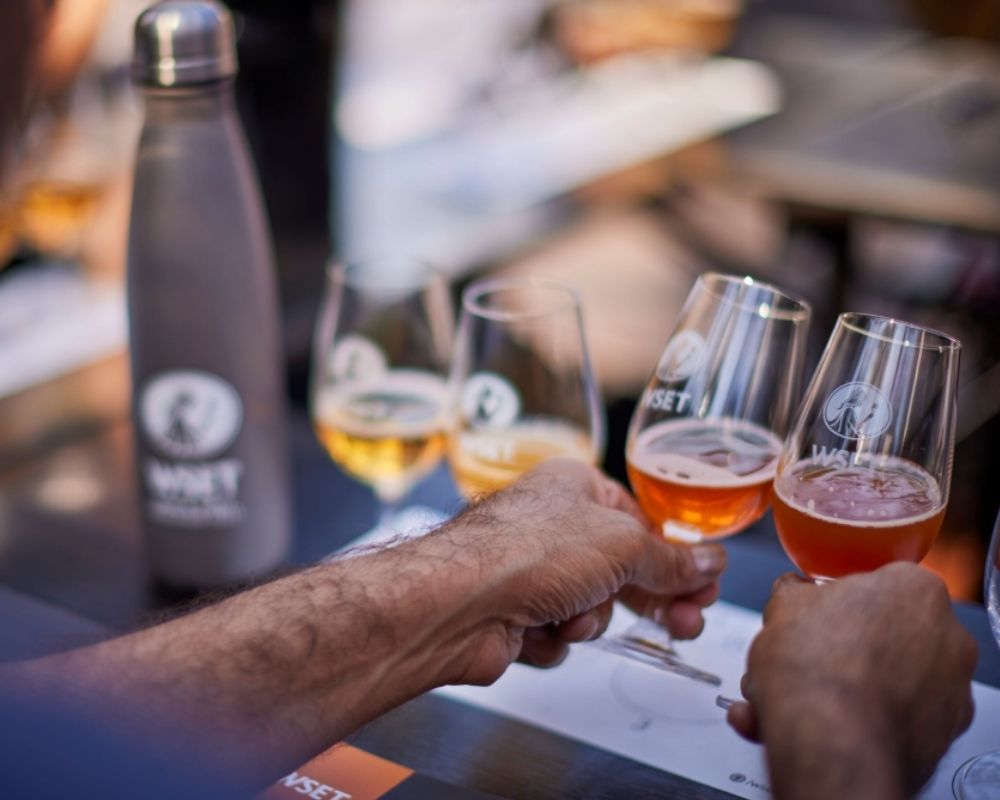
Mistake #6: Not Taking Accurate Tasting Notes
“That was a great wine… but I can’t remember the name.”
“Pretty sure I’ve tasted this before… but no idea if I liked it or not.”
This is one of the most common tasting mistakes, even among seasoned enthusiasts.
You taste, you enjoy, you discuss…
But you don’t write anything down.
The result?
A few days later, you can’t remember the name of the wine/spirit/sake/beer, the producer, the vintage, the grape…
Or even your actual impression.
When it is time to recommend it or buy it again — everything feels vague.
Why is this a problem?
Without clear tasting notes, your learning plateaus:
- You lose valuable references
- You forget key sensations
- You fail to build a reliable taste memory
Yet this memory is essential for professionals — and passionate amateurs — to recognize styles, regions, grape varieties, and to compare wines accurately over time.
It also helps you understand what you truly like, beyond fleeting impressions.
How to avoid this mistake?
Use a structured method
That’s exactly what the WSET SAT method (Systematic Approach to Tasting) is for.
It gives you a universal vocabulary and teaches you how to describe a product in detail: intensity, aromas, structure, quality, aging potential… all through a clear and repeatable framework.
Example of professional tasting notes:
- Nose: medium intensity, ripe black fruit, vanilla, clove
- Palate: dry, medium tannins, high acidity, medium body, consistent with the nose
- Conclusion: balanced wine, good to very good, drink now or within 2–3 years
This structured approach allows you to compare wines objectively — and to recall them months or even years later.
Create your own tasting notebook
You can:
- Use a physical tasting journal
- Create a spreadsheet in Excel or Notion
- Try wine apps like Vivino or WineNotes (used wisely)
WSET Tip:
Always note the following:
- Name of the wine / producer / vintage
- Tasting conditions (glass, temperature, food pairing)
- Objective structure (acidity, tannins, body, flavor profile)
- Personal impressions
Take photos
A simple picture of the bottle — paired with your notes — can save your memory.
Ideal when tasting at a friend’s place, a bar, or a restaurant.
At Weeno, during our WSET-certified courses:
We don’t just say, “this wine/spirit/sake/beer is good.”
We teach you how to:
- Describe a wine objectively
- Justify your impressions clearly
- Compare different wines critically
- Build a solid sensory memory
We also provide professional tasting sheets, and we guide you through real exercises — so you can taste, write, and progress like a pro.
👉 Ready to take your tasting skills to the next level?
Explore our WSET wine courses (in-person or online): weenodrinksacademy.com
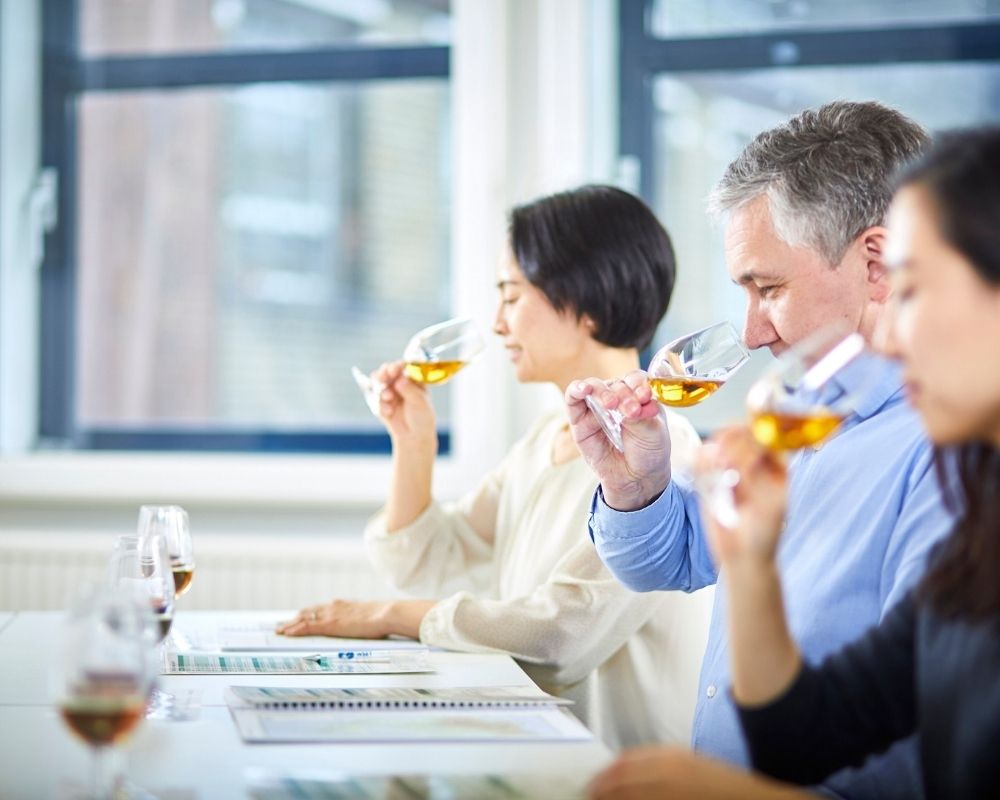
Mistake #7: Tasting Without Feedback or Progression
Many wine tasters hit a plateau simply because they never receive feedback.
They taste alone, without knowing if they are on the right track — or how to improve.
This is a subtle but critical mistake. We often think we’re improving just by tasting more…
But without structured feedback or real self-assessment, we end up going in circles.
We stay in our comfort zone, repeating the same habits and biases — without even noticing.
It’s like trying to learn an instrument without ever listening to yourself play, or receiving any guidance.
Why is this a problem?
Even if you taste a lot of wines/spirits/sakes/beers, you are likely to:
- Repeat the same tasting analysis mistakes (misjudging aromas, balance, or quality)
- Have a limited or vague wine vocabulary
- Confuse personal preference with objective quality
- Stay overly reliant on outside opinions (labels, Parker scores, wine merchants…)
Most importantly: you are not learning actively.
Tasting is a skill — and like any skill, it develops through method, feedback, and deliberate practice.
How to avoid this mistake?
Learn with expert guidance
Join guided tastings
Find a course, club, or workshop where:
- You are mentored by a certified instructor
- You compare your impressions with others
- You receive precise and constructive feedback
At Weeno, our WSET courses are designed for this.
Each session includes guided tastings where you sharpen your perception and learn how to justify your conclusions.
Calibrate your palate with reference points
After each tasting:
- Compare your notes with a teacher’s or trusted source (e.g., WSET SAT, Wine Advocate, Decanter)
- Ask yourself:
- Did I identify the key aromas accurately?
- Was my analysis of acidity, tannins, alcohol, and body correct?
- Could I express the wine’s quality and aging potential more clearly?
This habit turns tasting into a learning experience — not just a casual activity.
Track your tasting evolution
Use a journal or digital tool to monitor:
- The wine styles you have explored
- The tasting skills you have developed (aroma ID, balance, quality judgment, etc.)
- The areas where you still need improvement
By tracking your growth, you give yourself clear goals.
And each wine tasting becomes focused practice, not just another drink.
At Weeno, every WSET course includes:
- Professional tasting grids
- Comparative tastings (e.g., 2 Chardonnays, 3 Pinot Noirs side-by-side)
- Personalized feedback from certified instructors
- A clear path of progression from WSET Level 1 to Level 3
The result?
You do not just drink wine anymore —
You analyze it.
You evaluate it.
You explain it.
And that is the difference between simply enjoying wine…
And truly mastering the art of tasting.
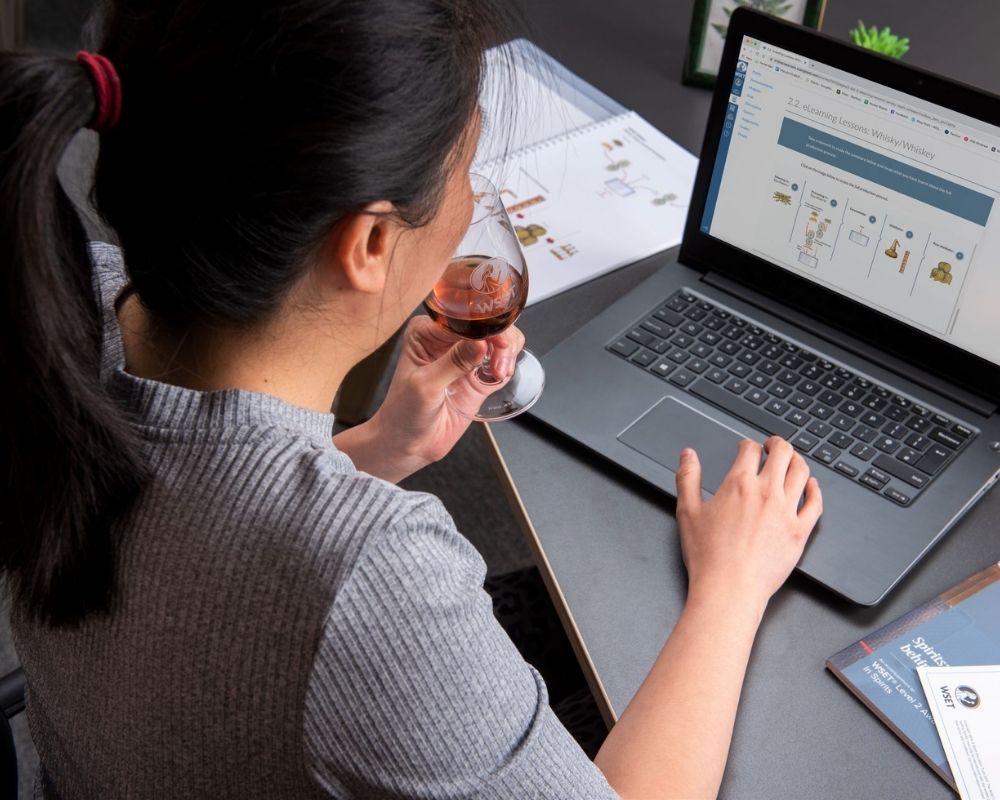
Don’t Let These Tasting Mistakes Hold You Back
If you love wine, you deserve to truly understand it.
And tasting is the most powerful tool to do that.
But only if you avoid the most common wine tasting mistakes:
- Tasting without a structured method
- Being influenced by labels or price
- Judging based only on personal preferences
- Rushing through instead of observing
- Tasting in poor conditions
- Failing to take notes
- Tasting without feedback or progression
The good news?
Every one of these tasting mistakes can be fixed.
And that’s exactly what you’ll learn in our WSET courses at Weeno:
Structured, progressive, and crystal-clear lessons — so you can see, taste, understand, and remember.
At Weeno, we train passionate wine lovers and professionals every month in the art of tasting:
- Online or in-person classes
- Tasting kits delivered to your door
- Certified and passionate instructors
- Exclusive learning materials, quizzes, and cheat sheets
- WSET certifications recognized in over 70 countries
Learn to taste like a pro. Build your wine knowledge step by step.
And earn an international certification to boost your skills and your career.
👉 Book your next WSET training session — online or in Paris/Marseille — at weenodrinksacademy.com
👉 Join us in person in Paris or Marseille — or study from home with our professional tasting kits.

